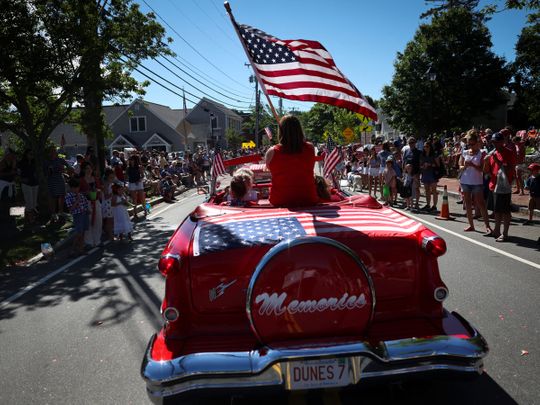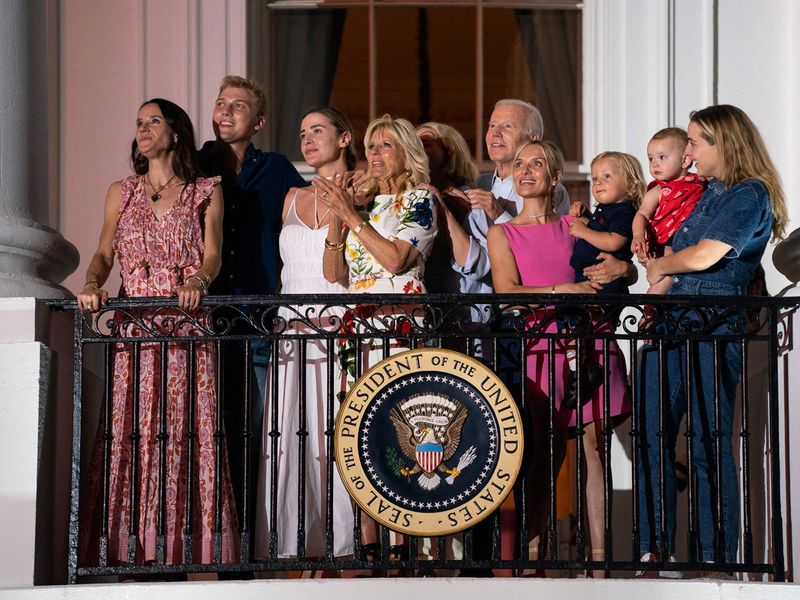
“Resolved,” said the Second Continental Congress, in 1777, “that the flag of the United States be thirteen stripes, alternate red and white; that the union be thirteen stars, white in a blue field, representing a new constellation.”
The resolution said nothing else. Precisely how those stars and stripes should be arranged wasn’t specified. In the years that followed, the flag would undergo 26 formal permutations, and many more metaphorical ones. Eventually its proportions would be standardised, its colour shades regularised, and its sparkling field of stars expanded with each new state. Kids would pledge allegiance to it. Soldiers would die beneath it. Protesters would burn it.
To see American neighbourhoods now is to see flags of every colour, honouring Black Lives and Blue Lives, MAGA and Gadsden, POW-MIA and LGBTQ+ — even flags that honour and attack single individuals. They hang from homes and highway overpasses, billow over boardwalks and boats, and trail from the truck tailgates in red states and blue. At times they seem to be fluttering in angry discourse with one another, making it hard to find refuge from our national political divisions and the blinding passions they stir.

It’s worth remembering, on this 246th anniversary of the republic, that Old Glory is meant to contain all that and more. It affirms the right to express such differences even as it denies any faction ownership of itself. The flag is the flag, and it encompasses the whole American idea.
As the abolitionist Henry Ward Beecher would put it, in 1861: “A thoughtful mind, when it sees a nation’s flag, sees not the flag, but the nation itself. And whatever may be its symbols, its insignia, he reads chiefly in the flag the government, the principles, the truths, the history that belong to the nation that sets it forth.
If one, then, asks me the meaning of our flag, I say to him, it means just what Concord and Lexington meant, what Bunker Hill meant; it means the whole glorious Revolutionary War, which was, in short, the rising up of a valiant young people against an old tyranny, to establish the most momentous doctrine that the world had ever known, or has since known — the right of men to their own selves, and to their liberties.”
To a pessimist’s eye, the civic project embodied in the flag has rarely looked worse. Political divisions are widening, fuelled by prowling demagogues who speak of “we” and “they,” and who see national collapse in elections and policies that don’t go their way. In 1858, Abraham Lincoln addressed himself in part to such concerns. He noted how many Americans at the time were immigrants, or those “whose ancestors have come hither and settled here, finding themselves our equals in all things.”
What established that egalitarian ideal was the great principle of the Declaration of Independence, the one Americans celebrate on July Fourth every year: that all men are created equal. “That is the electric cord in that Declaration that links the hearts of patriotic and liberty-loving men together, that will link those patriotic hearts as long as the love of freedom exists in the minds of men throughout the world.”
The US has often failed to live up to the Declaration’s ideals. But no one can doubt the nobility of its aspirations. America, as F. Scott Fitzgerald said, is a “willingness of the heart.” Even in trying times, especially in trying times, the star-spangled banner evokes that willingness, and offers hope of better days to come.
— Bloomberg
Michael R. Bloomberg is United States’ UN Special Envoy on Climate Ambition and Solutions




